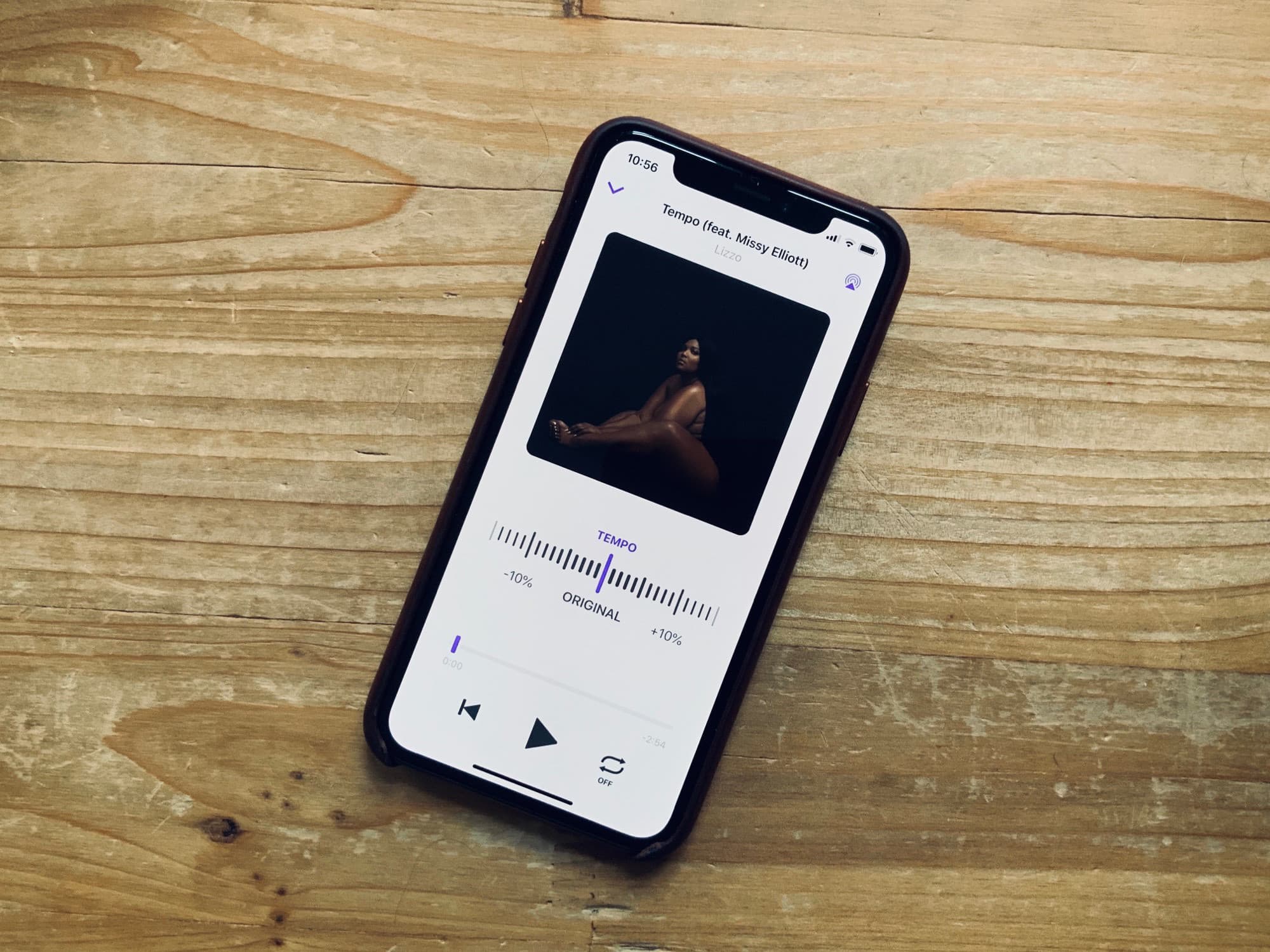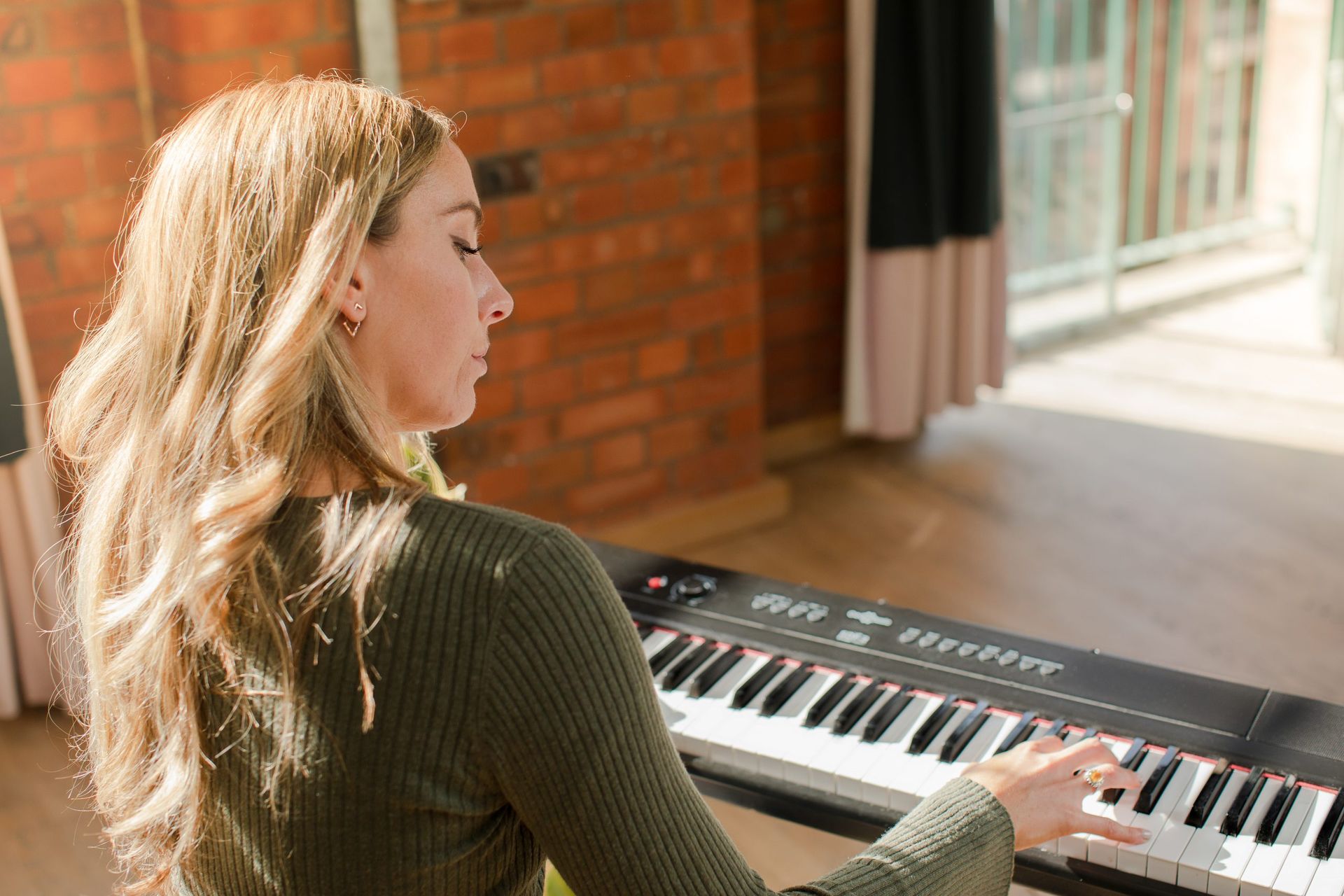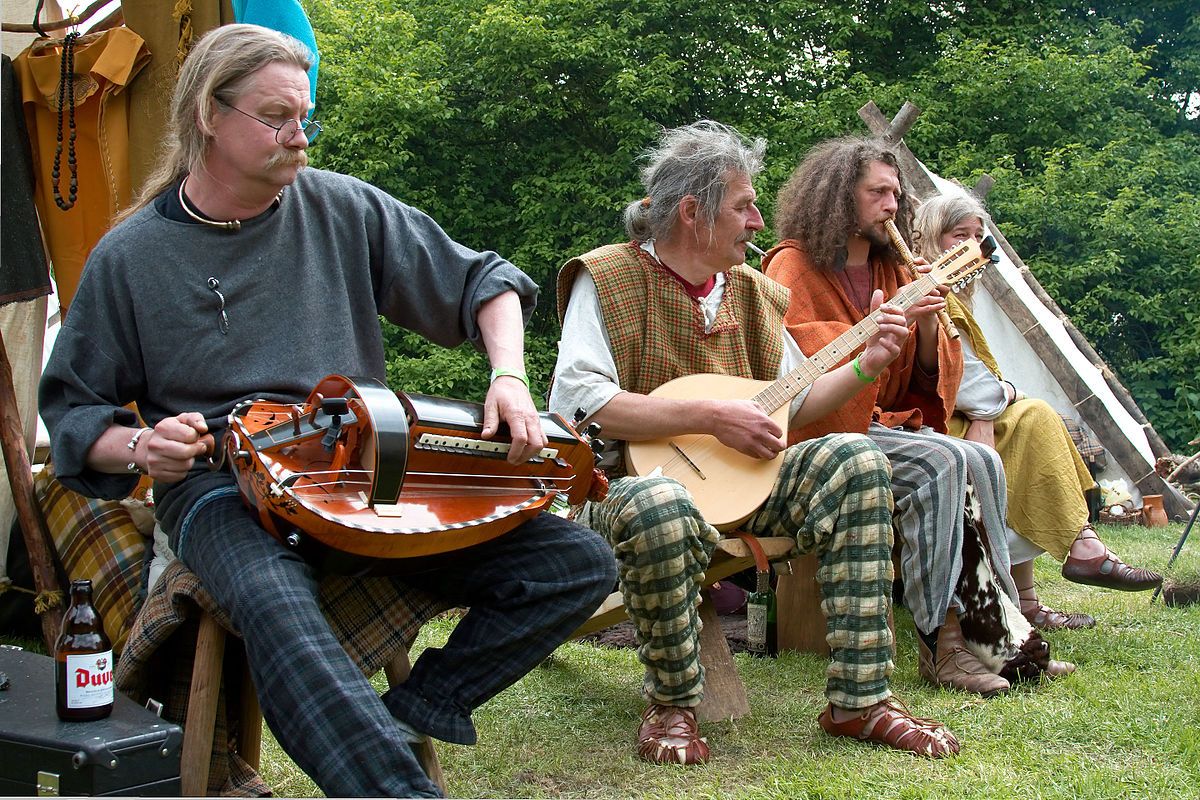Home>Production & Technology>Tempo>What Is A Slow Tempo In Music


Tempo
What Is A Slow Tempo In Music
Published: December 9, 2023
Learn about the concept of tempo in music and understand what a slow tempo means. Discover how it can affect the mood and rhythm of a musical piece.
(Many of the links in this article redirect to a specific reviewed product. Your purchase of these products through affiliate links helps to generate commission for AudioLover.com, at no extra cost. Learn more)
Table of Contents
Introduction
Welcome to the world of music, where every note, rhythm, and melody carries its own unique meaning and emotion. One of the key elements that contribute to the overall vibe of a piece of music is its tempo. Tempo refers to the speed at which a musical piece is played, giving it a sense of pace and rhythm.
In the vast landscape of music, there are various tempos that artists and composers utilize to convey different moods and feelings. From fast and energetic to slow and contemplative, each tempo has its own significance and impact on the listener. In this article, we will be diving into the world of slow tempo music, exploring its definition, characteristics, emotional impact, and its relation to other musical elements.
Slow tempo music is often associated with relaxation, introspection, and a sense of calmness. It allows the listener to slow down, reflect, and immerse themselves in the subtle nuances and emotions expressed through the music. This genre of music has been embraced and appreciated by generations, as it has the power to evoke a wide range of emotions and create a deep connection with the listener.
Throughout this article, we will explore the qualities that define slow tempo music, including its distinct characteristics that set it apart from other tempos. We will also look at some examples of well-known slow tempo songs from various genres and analyze the emotional impact that this genre has on the listener. In addition, we will discuss how slow tempo interacts with other musical elements such as melody, harmony, and lyrics, and the overall effect it has on the composition as a whole.
So, whether you are a music lover, a musician, or someone looking to explore a new side of music, join us on this musical journey as we delve into the beautiful world of slow tempo music.
Definition of Tempo in Music
Tempo, in the context of music, refers to the speed or pace at which a musical piece is performed. It determines the rhythm and overall feel of the music, giving it a sense of energy, movement, or calmness. Tempo is an essential element in music as it guides the performers and influences the emotional impact on the listener.
In musical notation, tempo is indicated using specific Italian terms or precise beats per minute (BPM) markings. Italian terms such as “Largo” (very slow), “Adagio” (slow and stately), “Moderato” (moderate), and “Allegro” (fast) are commonly used to describe different tempo markings.
Tempo not only affects the mood and expression of a piece but also plays a crucial role in determining the genre and style of the music. For instance, classical music often features a wide range of tempos, from slow and contemplative adagios to fast and lively allegros, while dance music genres like techno or hip hop typically have a consistent and energetic tempo throughout.
It’s important to note that tempo is subjective and can vary depending on the interpretation of the performer or the artistic intent of the composer. While a specific tempo marking provides a general guideline, musicians are encouraged to bring their own artistic expression to the performance and may choose to slightly deviate from the prescribed tempo to enhance the musical experience.
Tempo not only affects the overall speed of a piece but also influences the rhythm and phrasing. It determines the duration of each note or rest and sets the pace for intricate melodic lines, harmonies, and dynamic changes.
Understanding the concept of tempo and its various markings allows musicians and listeners to engage with the music more fully. Whether it’s the gentle ebb and flow of a slow tempo ballad or the frenetic energy of an up-tempo jazz piece, tempo plays a vital role in bringing music to life and capturing the essence of the composition.
Understanding the Concept of Slow Tempo
Slow tempo, as the name suggests, refers to a musical piece played at a leisurely pace. It is characterized by a relaxed, unhurried rhythm that allows for a deeper exploration of the musical elements and the emotions they convey. Slow tempo music often encourages introspection, evoking a sense of tranquility and contemplation.
When a piece of music is composed or performed with a slow tempo, it creates a deliberate and intentional sense of space between notes. This spaciousness allows the listener to fully absorb and appreciate the subtleties of the melody, harmony, and lyrics, enhancing the emotional impact of the music.
Slow tempo music serves as a sonic canvas, providing room for long, sustained notes, gentle phrasing, and expressive dynamics. The deliberate pacing allows for the music to breathe and unfold gradually, captivating the listener’s attention and drawing them into the depth of the composition.
While slow tempo music is often associated with relaxation, it is important to note that it can encompass a wide range of emotions. It can evoke feelings of serenity, nostalgia, melancholy, or even introspective sadness. The slower pace allows for more nuanced expressions of emotion, enabling the music to resonate on a deeper level with the listener.
Furthermore, slow tempo music can also create a sense of anticipation and build tension. The deliberate pacing builds suspense and heightens the emotional impact when a resolution or a change in dynamics finally arrives. This contrast between stillness and movement adds an extra layer of dramatic effect and engages the listener in a unique and captivating way.
Slow tempo music can be found across various genres, including classical music, jazz, ballads, ambient, and even some forms of rock or electronic music. Each genre infuses its own style, instrumentation, and musical elements into the slow tempo framework, creating diverse and compelling compositions.
To truly appreciate and understand slow tempo music, it is important to embrace the patience and willingness to immerse oneself in the richness of the musical experience. By allowing the music to unfold at its own pace, listeners can discover the beauty and intricacies that lie within the gentle rhythm of slow tempo compositions.
Characteristics of Slow Tempo Music
Slow tempo music has distinct characteristics that set it apart from other tempos. These characteristics contribute to the overall mood, atmosphere, and emotional impact of the composition. Let’s delve into some key features that define slow tempo music.
- Languid Pace: Slow tempo music moves at a leisurely and unhurried pace. The rhythm is relaxed, allowing each note to be savored and appreciated, creating a sense of spaciousness and tranquility.
- Slow tempo music often features long, sustained notes that emphasize the rich textures and harmonies of the composition. These extended notes contribute to the atmospheric quality of the music.
- Slow tempo compositions offer the opportunity for dynamic expression. They can start softly, gradually build intensity, or maintain a consistent, gentle volume throughout, creating a sense of emotional depth and nuance.
- Slow tempo music puts a strong emphasis on the melodies. The deliberate pace allows for the melodic lines to be explored and developed fully, enabling the listener to absorb the intricacies and emotional nuances of the melodies.
- Slow tempo music often features extended or irregular time signatures, creating a sense of ambiguity and spaciousness. This rhythmic complexity adds to the sense of contemplation and allows for unique melodic and harmonic explorations.
- Slow tempo pieces have the freedom to utilize long, elaborate musical phrases. These extended phrases can be instrumental solos or vocal lines, providing ample space for artistic expression and exploration within the composition.
- Slow tempo music often utilizes instruments and textures that enhance the immersive and contemplative nature of the composition. This can include lush string sections, subdued piano melodies, or ambient electronic soundscapes.
These characteristics work together to create a sense of stillness, introspection, and emotional depth in slow tempo music. They allow the listener to fully engage with the composition, immersing themselves in the subtle nuances of the melodies, harmonies, and textures, and experiencing a profound connection with the music.
Examples of Slow Tempo Music
Slow tempo music can be found in various genres and has produced numerous timeless compositions. Let’s explore a few examples that showcase the beauty and emotional impact of this genre:
- “Adagio for Strings” by Samuel Barber: This classical masterpiece is a stunning example of slow tempo music. The mournful, contemplative strings create a sense of profound sadness and longing, evoking a powerful emotional response from listeners.
- “Hallelujah” by Leonard Cohen: This iconic ballad features a slow, deliberate tempo that allows for the heartfelt lyrics and melancholic melody to take center stage. The emotional depth and vulnerability expressed in the song have resonated with audiences for decades.
- “Nuvole Bianche” by Ludovico Einaudi: This contemporary piano piece is known for its gentle, delicate tempo. The cascading notes and soaring melodies create a serene and introspective atmosphere, captivating listeners with its ethereal beauty.
- “The Sound of Silence” by Simon & Garfunkel: With its haunting melody and melancholic lyrics, this folk classic embodies the essence of slow tempo music. The restrained pace enhances the introspective and reflective nature of the song, leaving a lasting impact on listeners.
- “Spiegel im Spiegel” by Arvo Pärt: This minimalist composition features a slow and repetitive tempo that mesmerizes the listener. The delicate piano notes and long, sustained violin lines create a sense of tranquility and introspection, making it a favorite among fans of slow tempo music.
These examples represent just a fraction of the vast collection of slow tempo music available across different genres. Each composition showcases the power of slow tempo in evoking deep emotions, creating a musical experience that lingers long after the last note fades away.
Emotional Impact of Slow Tempo Music
Slow tempo music has a profound emotional impact on listeners, often evoking a wide range of feelings and creating a unique musical experience. The deliberate pacing and spaciousness of slow tempo compositions allow for a deeper exploration of emotions. Here are some of the emotional responses that slow tempo music can elicit:
Relaxation and Tranquility: One of the primary emotional effects of slow tempo music is a sense of relaxation and tranquility. The unhurried pace, gentle melodies, and soothing harmonies create a calming atmosphere, helping to alleviate stress and bring a sense of peace to the listener.
Introspection and Contemplation: Slow tempo music often encourages introspection and deep contemplation. The slow, deliberate pacing allows the listener to delve into their inner thoughts and emotions, providing a space for self-reflection and introspective moments.
Sadness and Melancholy: Slow tempo music is known to evoke feelings of sadness and melancholy. The extended phrases, expressive dynamics, and haunting melodies create a poignant atmosphere that can elicit a deep emotional response, touching on themes of loss, longing, and nostalgia.
Beauty and Serenity: Slow tempo compositions often have an inherent beauty and serenity to them. The intricate melodies, harmonies, and textures combine to create a serene and ethereal atmosphere that captivates the listener, transporting them to a place of tranquility and awe.
Anticipation and Tension: Although slow tempo music is generally associated with relaxation, it can also create a sense of anticipation and build tension. The deliberate pacing and gradual development of the musical elements can heighten anticipation in the listener, leading to a cathartic release when resolution or change finally arrives.
Empathy and Connection: Slow tempo music can foster a deep sense of empathy and connection between the listener and the music. The emotional depth and vulnerability expressed in slow tempo compositions can resonate with personal experiences and create a profound emotional connection between the listener and the artist.
Whether it’s the gentle sway of a slow tempo ballad, the atmospheric soundscape of an ambient composition, or the poignant melodies of a classical piece, slow tempo music holds the power to evoke intense emotions and create a transformative musical experience.
Relation of Slow Tempo to Other Musical Elements
Slow tempo music influences and interacts with various other musical elements, creating a cohesive and impactful composition. Let’s explore the relationship between slow tempo and these elements:
Melody: Slow tempo allows melodies to be fully developed and explored. The leisurely pace gives each note room to breathe, allowing for expressiveness and emotional depth. Slower tempos often feature long, sustained notes and intricate melodic lines that have the power to captivate listeners and evoke a strong emotional response.
Harmony: Slow tempo music allows for the richness of harmonies to be fully appreciated. The extended duration of chords and slower harmonic progressions adds complexity and depth to the composition. This interplay between slow tempo and harmonies creates a sense of emotional resonance and gives the music a lush, full-bodied sound.
Rhythm: Slow tempo music often contains a steady and deliberate rhythm. The slower pace allows for greater emphasis on individual beats and rhythms within the piece. The intentional spacing between notes and the elongated duration of each beat contribute to the overall atmospheric quality and mood of the composition.
Dynamics: The deliberate tempo of slow tempo music allows for expressive dynamics. The soft and gentle volume at the beginning of a piece can gradually build and intensify, creating a sense of tension and release. The controlled use of dynamics enhances the emotional impact of the music and adds depth and nuance to the composition.
Lyrics: In songs with lyrics, slow tempo music often provides a perfect backdrop for the delivery of heartfelt and introspective lyrics. The deliberate pacing of the music accentuates the emotional weight of the words, allowing for a more profound connection with the listener. The interplay between slow tempo and lyrics can evoke a sense of vulnerability, empathy, and contemplation.
Instrumentation: Slow tempo compositions often feature instrumentation that complements the overall mood and atmosphere. String instruments, pianos, and acoustic guitars are commonly used to create a gentle and introspective sound. The choice of instruments can heighten the emotional impact of the music and add texture and depth to the composition.
The relationship between slow tempo and other musical elements is crucial in creating the desired emotional impact and overall effect of a piece. The intentional interplay between melody, harmony, rhythm, dynamics, lyrics, and instrumentation allows slow tempo music to evoke deep emotions and create a truly immersive and captivating musical experience.
Analysis of the Effects of Slow Tempo on the Listener
The slow tempo in music has profound effects on the listener, influencing their emotional state, perceptions, and overall experience. Let’s analyze some of the key effects that slow tempo music has on its audience:
Relaxation and Mindfulness: The slow tempo of music encourages the listener to slow down their pace of life and enter a state of relaxation and mindfulness. The gentle rhythm and melodic flow create a soothing and calming effect, allowing listeners to find a sense of peace and tranquility amidst the busyness of everyday life.
Heightened Emotional Response: Slow tempo compositions have the power to elicit intense emotional responses from listeners. The deliberate pace and expressive melodies allow for a deeper connection to the music, intensifying feelings of sadness, longing, nostalgia, or serenity. This heightened emotional response can lead to introspection and self-reflection.
Enhanced Concentration and Focus: Slow tempo music can enhance concentration and focus. The steady and deliberate rhythm, combined with the atmospheric nature of the music, creates an environment conducive to deep focus and engagement. This effect can be especially beneficial when engaging in tasks that require deep thinking or introspection.
Time for Self-Reflection: Slow tempo music provides a space for self-reflection and contemplation. The spaciousness between notes and the pacing of the composition allow listeners to delve into their thoughts and emotions, providing a break from the fast-paced world and fostering introspection and personal growth.
Transportation to an Emotional Landscape: Slow tempo music has the ability to transport listeners to an emotional landscape. The carefully crafted melodies and atmospheric textures create a sonic environment that can evoke specific emotions or paint vivid mental imagery. This transportation can allow listeners to escape reality for a while and experience a deeper connection to their inner selves.
A Sense of Empathy and Connection: Slow tempo music often evokes a sense of empathy and connection between the listener and the music. The emotional depth, vulnerability, and authenticity expressed in slow tempo compositions can resonate with personal experiences, creating a profound connection with the listener. This connection can foster a sense of understanding, empathy, and shared emotions.
Stress Relief and Well-being: The slow tempo in music has been found to have stress-relieving effects and contribute to overall well-being. Slowing down and immersing oneself in the gentle rhythms and melodies of slow tempo music can reduce anxiety, lower heart rate, and induce a sense of calmness and serenity, promoting mental and emotional well-being.
Overall, slow tempo music has a transformative impact on the listener, creating an emotional journey, enhancing focus and self-reflection, and fostering a sense of empathy and connection. It is a powerful tool for emotional expression and self-exploration, providing solace and healing in a fast-paced world.
Conclusion
Slow tempo music holds a special place in the vast and diverse world of music. It is a genre that invites listeners to slow down, immerse themselves in the beauty of the melodies, and experience a range of emotions on a deeper level. From classical compositions to contemporary ballads, slow tempo music offers a unique sonic journey that captivates and moves the listener.
Throughout this article, we have explored the definition of tempo in music and specifically focused on the concept of slow tempo. We have discovered the characteristics that define slow tempo music, such as the languid pace, expressive dynamics, and extended melodies. We have also discussed how slow tempo interacts with other musical elements, creating a cohesive and impactful composition.
Slow tempo music has a profound emotional impact on listeners, whether it’s invoking relaxation and tranquility, eliciting a heightened emotional response, or fostering self-reflection and mindfulness. It transports listeners to an emotional landscape, fostering empathy and connection, while providing a sense of stress relief and well-being.
By understanding and appreciating slow tempo music, listeners can embark on a musical journey that goes beyond mere entertainment. It offers a space for introspection, emotional release, and personal connection. Slow tempo compositions have the power to touch our souls, stir our emotions, and provide a sense of solace amidst the chaos of everyday life.
So, the next time you find yourself in need of a moment of introspection or a soundtrack for relaxation, turn to slow tempo music. Allow its gentle rhythms, expressive melodies, and atmospheric qualities to transport you to a place of tranquility and emotional depth. Explore the depths of slow tempo music and discover the beauty and power that lies within its deliberate and unhurried rhythm.











